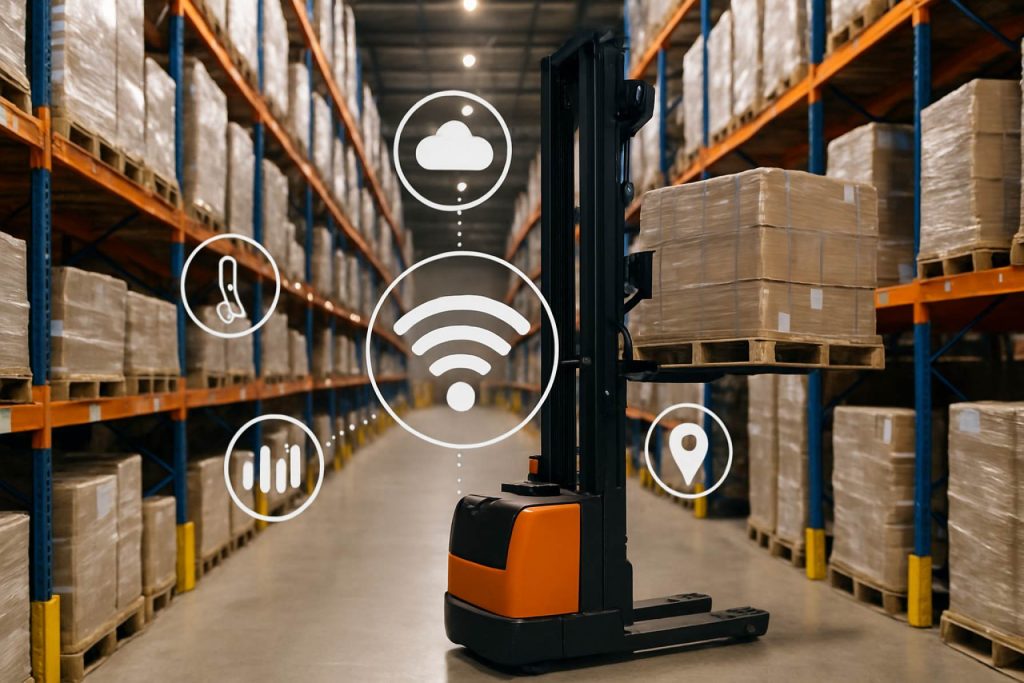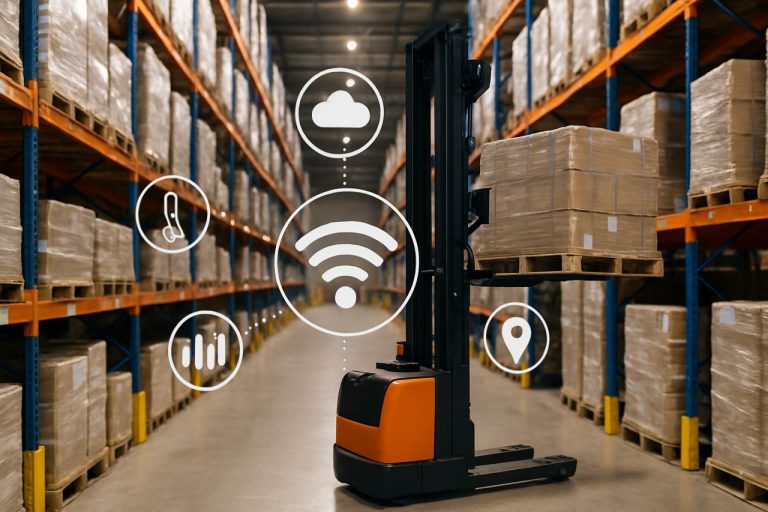
Wireless Sensor Networks for Smart Warehousing Systems 2025: In-Depth Market Analysis, Technology Trends, and Strategic Forecasts for the Next 5 Years
- Executive Summary & Market Overview
- Key Technology Trends in Wireless Sensor Networks for Warehousing
- Competitive Landscape and Leading Players
- Market Growth Forecasts (2025–2030): CAGR, Revenue, and Volume Analysis
- Regional Market Analysis: North America, Europe, APAC, and Rest of World
- Challenges, Risks, and Barriers to Adoption
- Opportunities and Strategic Recommendations
- Future Outlook: Innovations and Market Evolution
- Sources & References
Executive Summary & Market Overview
Wireless Sensor Networks (WSNs) are a foundational technology in the evolution of smart warehousing systems, enabling real-time monitoring, automation, and data-driven decision-making. A WSN consists of spatially distributed autonomous sensors that communicate wirelessly to collect and transmit data about environmental conditions, asset locations, and operational parameters. In the context of smart warehousing, these networks facilitate inventory management, predictive maintenance, energy optimization, and enhanced security.
The global market for wireless sensor networks in smart warehousing is poised for robust growth, driven by the rapid adoption of Industry 4.0 practices, the proliferation of Internet of Things (IoT) devices, and the increasing demand for supply chain visibility. According to MarketsandMarkets, the overall WSN market is projected to reach USD 93.5 billion by 2025, with logistics and warehousing representing a significant and expanding segment.
Key market drivers include:
- Operational Efficiency: WSNs enable real-time tracking of goods, automated stock replenishment, and streamlined workflows, reducing labor costs and minimizing errors.
- Scalability and Flexibility: Wireless solutions are easier to deploy and expand compared to wired systems, supporting dynamic warehouse layouts and rapid scaling to meet fluctuating demand.
- Integration with Advanced Technologies: The convergence of WSNs with AI, machine learning, and cloud analytics is unlocking new capabilities in predictive maintenance, anomaly detection, and process optimization.
Regionally, North America and Europe are leading adopters, fueled by established logistics infrastructure and early digital transformation initiatives. However, the Asia-Pacific region is expected to witness the fastest growth through 2025, propelled by expanding e-commerce, investments in smart logistics, and government initiatives supporting digital supply chains (International Data Corporation (IDC)).
Major industry players such as Cisco Systems, Honeywell International, and Siemens AG are investing heavily in R&D to enhance sensor accuracy, battery life, and network security. The competitive landscape is also witnessing the entry of specialized IoT startups offering tailored WSN solutions for warehousing applications.
In summary, the market for wireless sensor networks in smart warehousing is set for significant expansion in 2025, underpinned by technological advancements, evolving customer expectations, and the imperative for agile, data-driven supply chain operations.
Key Technology Trends in Wireless Sensor Networks for Warehousing
Wireless Sensor Networks (WSNs) are at the forefront of transforming traditional warehousing into smart, data-driven environments. In 2025, the integration of WSNs in warehousing systems is characterized by several key technology trends that are reshaping operational efficiency, inventory management, and real-time monitoring.
One of the most significant trends is the adoption of low-power, long-range wireless communication protocols such as LoRaWAN and Zigbee. These protocols enable sensors to transmit data over large warehouse spaces with minimal energy consumption, extending battery life and reducing maintenance costs. According to Gartner, the use of such protocols is expected to grow by over 20% annually in logistics and warehousing applications through 2025.
Another critical trend is the integration of WSNs with Internet of Things (IoT) platforms and cloud-based analytics. This convergence allows for seamless data aggregation, advanced analytics, and remote monitoring. Warehouses are leveraging IoT-enabled WSNs to track environmental conditions (temperature, humidity), asset locations, and equipment status in real time. IDC reports that over 60% of new warehouse deployments in 2025 will feature cloud-connected sensor networks, enabling predictive maintenance and automated alerts for anomalies.
Edge computing is also gaining traction within WSN deployments. By processing data locally at the sensor or gateway level, warehouses can reduce latency and bandwidth usage, enabling faster decision-making for time-sensitive operations such as inventory movement and safety monitoring. McKinsey & Company highlights that edge-enabled WSNs can improve response times by up to 40% compared to cloud-only architectures.
Security and interoperability are increasingly prioritized as WSNs become more pervasive. Enhanced encryption protocols and standardized communication interfaces are being implemented to safeguard sensitive inventory data and ensure compatibility across diverse sensor types and warehouse management systems. The International Organization for Standardization (ISO) has introduced new guidelines in 2024 to address these challenges, promoting secure and interoperable WSN deployments in logistics.
Finally, the integration of artificial intelligence (AI) and machine learning (ML) with WSNs is enabling smarter warehousing operations. AI-driven analytics can identify patterns, optimize storage layouts, and forecast inventory needs, further enhancing the value proposition of WSNs in smart warehousing systems.
Competitive Landscape and Leading Players
The competitive landscape for wireless sensor networks (WSNs) in smart warehousing systems is rapidly evolving, driven by the increasing adoption of Industry 4.0 technologies and the need for real-time inventory and asset management. As of 2025, the market is characterized by a mix of established technology conglomerates, specialized IoT solution providers, and innovative startups, all vying for market share through technological advancements, strategic partnerships, and tailored solutions.
Leading players in this space include Cisco Systems, which leverages its robust networking infrastructure to offer scalable WSN solutions integrated with advanced analytics and security features. Honeywell International remains a dominant force, providing end-to-end warehouse automation platforms that incorporate wireless sensors for temperature, humidity, and asset tracking. Siemens AG is another key player, focusing on industrial IoT (IIoT) platforms that enable seamless integration of WSNs with warehouse management systems (WMS) and enterprise resource planning (ERP) software.
Specialized IoT firms such as Libelium and Samsara are gaining traction by offering modular, easy-to-deploy sensor networks tailored for logistics and warehousing environments. These companies emphasize interoperability, low-power consumption, and cloud-based data analytics, addressing the unique challenges of large-scale warehouse deployments. Zebra Technologies is also notable for its RFID and sensor-based solutions that enhance real-time visibility and operational efficiency in warehouse settings.
The competitive dynamics are further shaped by strategic collaborations between WSN providers and logistics companies, as well as acquisitions aimed at expanding technological capabilities. For instance, partnerships between sensor manufacturers and cloud service providers are enabling more robust, AI-driven analytics for predictive maintenance and inventory optimization. According to Gartner, the market is witnessing increased investment in edge computing and 5G-enabled WSNs, which are expected to further differentiate leading vendors by reducing latency and supporting more complex, data-intensive applications.
- Key players: Cisco Systems, Honeywell International, Siemens AG, Libelium, Samsara, Zebra Technologies
- Market trends: Integration with AI/ML, edge computing, 5G connectivity, and cloud analytics
- Competitive strategies: Partnerships, acquisitions, and focus on interoperability and scalability
Market Growth Forecasts (2025–2030): CAGR, Revenue, and Volume Analysis
The market for Wireless Sensor Networks (WSNs) in smart warehousing systems is poised for robust growth between 2025 and 2030, driven by the accelerating adoption of Industry 4.0 technologies, the proliferation of IoT devices, and the increasing demand for real-time inventory and asset management. According to projections by MarketsandMarkets, the global WSN market is expected to achieve a compound annual growth rate (CAGR) of approximately 17% during this period, with the smart warehousing segment representing a significant share of this expansion.
Revenue generated from WSN deployments in smart warehousing is forecasted to surpass USD 3.2 billion by 2030, up from an estimated USD 1.2 billion in 2025. This surge is attributed to the increasing integration of wireless sensors for temperature, humidity, location tracking, and predictive maintenance within automated warehouses. The volume of WSN nodes deployed in warehousing environments is projected to grow at a CAGR of 19%, reflecting the trend toward denser sensor networks for granular monitoring and control.
Key growth drivers include:
- Rising e-commerce activity, which necessitates highly efficient, automated, and scalable warehousing solutions.
- Advancements in low-power wireless communication protocols (such as Zigbee, LoRaWAN, and Bluetooth Low Energy) that enable cost-effective, large-scale sensor deployments.
- Growing emphasis on supply chain visibility and operational resilience, especially in the wake of global disruptions.
Regionally, North America and Europe are expected to maintain leadership in WSN adoption for smart warehousing, supported by established logistics infrastructure and early digital transformation initiatives. However, the Asia-Pacific region is anticipated to exhibit the fastest growth, with a projected CAGR exceeding 20%, fueled by rapid industrialization and the expansion of e-commerce giants in China and India (Gartner).
In summary, the 2025–2030 period will see WSNs become a foundational technology in smart warehousing, with strong revenue and volume growth underpinned by technological innovation and evolving supply chain requirements.
Regional Market Analysis: North America, Europe, APAC, and Rest of World
The global market for wireless sensor networks (WSNs) in smart warehousing systems is experiencing robust growth, with regional dynamics shaped by technological adoption, supply chain modernization, and regulatory environments. In 2025, North America, Europe, Asia-Pacific (APAC), and the Rest of the World (RoW) each present distinct opportunities and challenges for WSN deployment in warehousing.
North America remains a frontrunner, driven by early adoption of Industry 4.0, a mature logistics sector, and strong investments in automation. The United States, in particular, is witnessing widespread integration of WSNs for real-time inventory tracking, environmental monitoring, and predictive maintenance. Major logistics and e-commerce players are leveraging WSNs to optimize warehouse operations and reduce labor costs. According to Grand View Research, North America accounted for over 35% of the global WSN market share in 2024, a trend expected to continue through 2025.
Europe is characterized by stringent regulatory standards for safety, sustainability, and data privacy, which are influencing WSN adoption. The region’s focus on green logistics and energy efficiency is driving demand for sensor-based monitoring of temperature, humidity, and energy consumption in warehouses. Germany, the UK, and the Netherlands are leading the charge, supported by government initiatives and a strong manufacturing base. Statista projects steady growth in the European smart warehousing market, with WSNs playing a pivotal role in compliance and operational optimization.
Asia-Pacific (APAC) is the fastest-growing region, fueled by rapid e-commerce expansion, urbanization, and government-led digitalization programs. China, Japan, and India are major contributors, with local and multinational companies investing in smart warehousing to meet rising consumer demand and improve supply chain resilience. The proliferation of affordable IoT devices and wireless technologies is lowering barriers to entry. MarketsandMarkets forecasts a double-digit CAGR for WSNs in APAC warehousing through 2025, outpacing other regions.
- Rest of the World (RoW) includes Latin America, the Middle East, and Africa, where adoption is nascent but accelerating. Growth is driven by modernization efforts in logistics hubs and free trade zones, particularly in the UAE, Brazil, and South Africa. However, challenges such as infrastructure gaps and limited technical expertise persist.
In summary, while North America and Europe lead in sophistication and regulatory-driven adoption, APAC is set to dominate growth in 2025, with RoW regions gradually catching up as digital transformation initiatives gain momentum.
Challenges, Risks, and Barriers to Adoption
The adoption of Wireless Sensor Networks (WSNs) in smart warehousing systems presents significant opportunities for operational efficiency, but it is not without its challenges, risks, and barriers. As of 2025, several key factors continue to impact the widespread deployment and integration of WSNs in warehouse environments.
- Interference and Signal Reliability: Warehouses are often dense with metal racks, machinery, and moving vehicles, which can cause significant radio frequency (RF) interference. This interference can degrade signal quality, leading to data loss or communication delays. Ensuring reliable connectivity across large and complex warehouse layouts remains a technical hurdle, as highlighted by GSMA.
- Security and Data Privacy: WSNs are vulnerable to cyber threats such as unauthorized access, data interception, and denial-of-service attacks. The distributed nature of sensor nodes increases the attack surface, making robust encryption and authentication protocols essential. According to Gartner, 75% of IoT projects, including WSNs, are expected to face security threats by 2025.
- Power Management and Maintenance: Many WSN nodes are battery-powered, and frequent battery replacement or recharging can be logistically challenging in large-scale deployments. Energy harvesting solutions are emerging, but their adoption is still limited by cost and efficiency constraints, as noted by IDC.
- Integration with Legacy Systems: Warehouses often operate with a mix of old and new technologies. Integrating WSNs with existing warehouse management systems (WMS) and enterprise resource planning (ERP) platforms can be complex and costly, requiring custom middleware and data translation layers, as reported by McKinsey & Company.
- Cost and ROI Uncertainty: The initial investment in WSN infrastructure, including sensors, gateways, and network management tools, can be substantial. For many organizations, the return on investment (ROI) is not immediately clear, especially when factoring in ongoing maintenance and potential system upgrades, as discussed by Statista.
Addressing these challenges requires ongoing innovation in wireless protocols, security frameworks, and integration standards, as well as clear business cases to justify investment in WSN-enabled smart warehousing.
Opportunities and Strategic Recommendations
Wireless Sensor Networks (WSNs) are poised to unlock significant opportunities in smart warehousing systems by 2025, driven by the rapid adoption of Industry 4.0 technologies and the growing need for real-time inventory management, asset tracking, and operational efficiency. As warehouses become increasingly automated, WSNs enable seamless data collection and communication among sensors, devices, and management platforms, facilitating smarter decision-making and resource optimization.
Key Opportunities:
- Real-Time Inventory Visibility: WSNs provide continuous monitoring of inventory levels, locations, and conditions, reducing stockouts and overstock situations. This capability is particularly valuable for industries with high-value or perishable goods, as it minimizes losses and improves order fulfillment rates (Gartner).
- Predictive Maintenance: By integrating WSNs with warehouse equipment, operators can monitor machine health and predict failures before they occur, reducing downtime and maintenance costs. This proactive approach is expected to become standard practice as more warehouses digitize their operations (McKinsey & Company).
- Energy Optimization: WSNs enable granular monitoring of energy consumption across lighting, HVAC, and equipment, allowing for dynamic adjustments that lower operational costs and support sustainability goals (International Energy Agency).
- Enhanced Safety and Compliance: Sensors can detect hazardous conditions such as temperature fluctuations, gas leaks, or unauthorized access, ensuring regulatory compliance and worker safety (Occupational Safety and Health Administration).
Strategic Recommendations:
- Invest in Scalable, Interoperable Solutions: Warehouses should prioritize WSN platforms that support integration with existing warehouse management systems (WMS) and can scale as operations grow.
- Leverage AI and Analytics: Combining WSN data with artificial intelligence and advanced analytics will unlock deeper insights, enabling predictive and prescriptive decision-making for inventory, maintenance, and energy management.
- Prioritize Cybersecurity: As WSNs increase the digital footprint of warehouses, robust cybersecurity measures are essential to protect sensitive operational data and prevent disruptions (Cybersecurity and Infrastructure Security Agency).
- Foster Workforce Training: Upskilling staff to manage and interpret WSN data will be critical to realizing the full benefits of smart warehousing systems.
Future Outlook: Innovations and Market Evolution
The future outlook for wireless sensor networks (WSNs) in smart warehousing systems is marked by rapid innovation and significant market evolution as we approach 2025. The convergence of advanced wireless communication protocols, edge computing, and artificial intelligence (AI) is expected to redefine operational efficiency, scalability, and data-driven decision-making in warehouse environments.
One of the most notable trends is the integration of low-power wide-area network (LPWAN) technologies, such as LoRaWAN and NB-IoT, which enable reliable, long-range connectivity for thousands of sensors with minimal energy consumption. This shift is crucial for large-scale warehouses seeking to monitor inventory, environmental conditions, and equipment status in real time without the constraints of traditional wired infrastructure. According to International Data Corporation (IDC), the adoption of LPWAN in logistics and warehousing is projected to grow at a double-digit CAGR through 2025, driven by the need for scalable and cost-effective IoT deployments.
Edge computing is another transformative force, allowing data processing to occur closer to the source—within the warehouse itself. This reduces latency and bandwidth requirements, enabling faster response times for critical applications such as predictive maintenance, asset tracking, and automated guided vehicles (AGVs). Gartner forecasts that by 2025, over 50% of enterprise-generated data in warehousing will be processed at the edge, up from less than 10% in 2021.
AI and machine learning are increasingly being embedded into WSN platforms, enabling advanced analytics for demand forecasting, anomaly detection, and dynamic resource allocation. These capabilities are expected to drive further automation and optimization, reducing labor costs and minimizing errors. McKinsey & Company estimates that AI-driven warehouse automation, powered by sensor networks, could deliver operational cost savings of up to 30% by 2025.
Market evolution is also characterized by the emergence of interoperable, standards-based solutions, facilitating seamless integration with existing warehouse management systems (WMS) and enterprise resource planning (ERP) platforms. This interoperability is critical for supporting multi-vendor ecosystems and future-proofing investments. As highlighted by GSMA, industry-wide collaboration on IoT standards is accelerating, with new frameworks expected to mature by 2025.
In summary, the future of WSNs in smart warehousing is poised for robust growth and technological advancement, underpinned by innovations in connectivity, edge intelligence, and AI-driven automation. These developments will enable warehouses to achieve unprecedented levels of efficiency, agility, and resilience in the evolving supply chain landscape.
Sources & References
- MarketsandMarkets
- International Data Corporation (IDC)
- Cisco Systems
- Honeywell International
- Siemens AG
- McKinsey & Company
- International Organization for Standardization (ISO)
- Samsara
- Zebra Technologies
- Grand View Research
- Statista
- International Energy Agency



